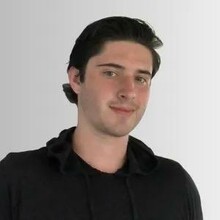Summer Student Profile: William Maciejowski

The Alberta Women's Health Foundation is proud to fund student researchers at the Women and Children's Health Institute. This summer, the AWHF funded William Maciejowski's project looking at parasite differences that underly the most prominent non-viral sexually transmitted disease in the world.
***Originally Published via WCHRI***
Unicellular parasites can infect humans and cause disease in many different ways, including by exporting proteins to the host, while also taking up host material. This is the way Trichomonas vaginalis (T. vaginalis) behaves. This parasite is generally asymptomatic in men and disproportionately affects women around the world. Through infection of the cells within a woman's vagina and cervix, the parasite causes issues with pregnancy, increases the risk of HIV, and is associated with infertility. This disease has become the most prominent non-viral STD in the world, infecting millions of women each year.
Pathways within T. vaginalis allow for the parasite to move materials from host to parasite and vice versa. This allows for the progression of the disease and survival of the parasite. In each compartment in the cell, molecular machinery, called adaptins, act to select cargo for transport and build up the packages in which it is shipped. Despite the small size of T. vaginalis, it has four times as many adaptins as humans. Understanding these machines will help us better know how this parasite works and how it came to be that way.
Additionally, T. vaginalis switches life stages between swimming and attached forms. Moreover, there are different genetic types of this parasite. We have received access to five individual T. vaginalis genomes in which we will complete searches for adaptins. Furthermore, we are unsure if the machineries that exist in more than one copy perform the same functions. To determine this, we will take each adaptin copy and assess any differences, specifically the area that determines which cargo to package.
The end goal of this project is to shine a light on how this disease came to be such a prominent force in women's health. By understanding the origins of the system that serves as the engine of the disease, we can better depict how this organism is functioning, and what may be done to turn that engine off, helping countless women around the world.
William Maciejowski was supervised by Joel Dacks. He graduated from the Bachelor of Science with Specialization in Pharmacology program.